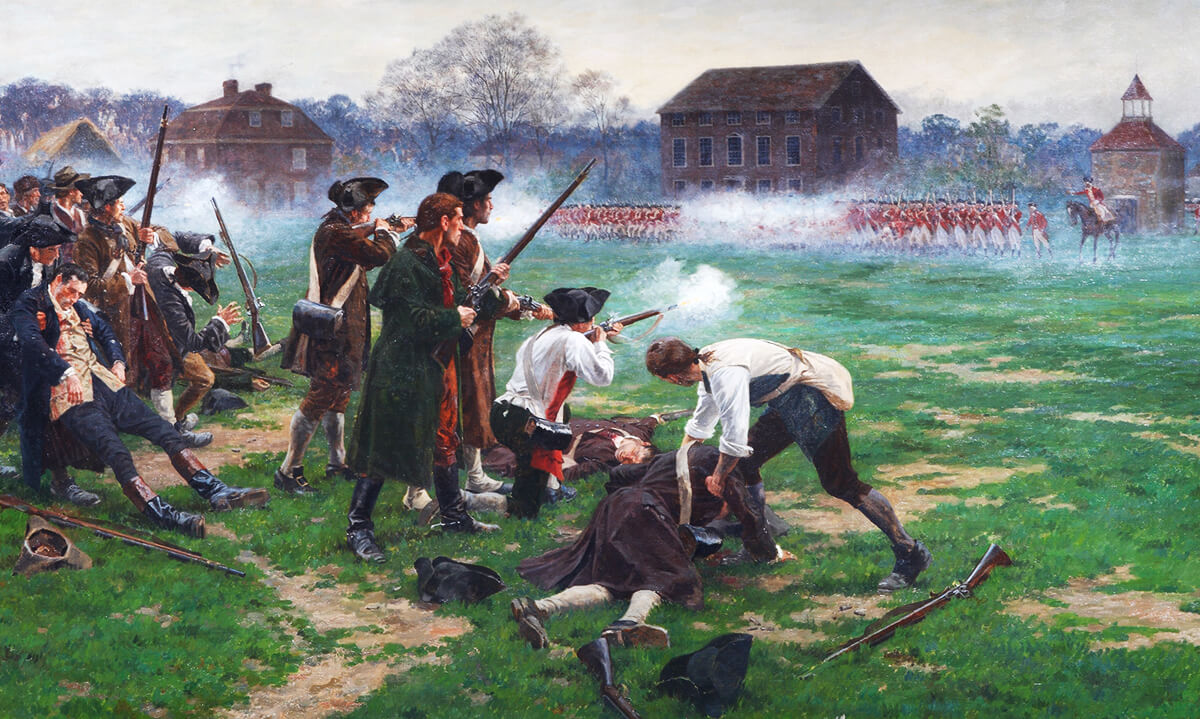Independence Day is the annual anniversary of the Continental Congress approving the Declaration of Independence on July 4th, 1776. That fateful day not only sealed the future for those brave men who approved that document but that paper also established the principles by which America became the most successful nation of the past three centuries.
Of the fifty-six men who signed this document, the final to pass away was Charles Carroll, who died at the age of 95. Before his passing, New York City asked him to inscribe his final thoughts on a copy of the Declaration. On it he wrote that he was “Grateful to Almighty God for the blessings which, through Jesus Christ Our Lord, He has conferred on my beloved country in her emancipation.” 1 Significantly, this Founding Father, in looking back over what had occurred as a result of the Declaration, wanted to specifically thank Jesus for what had happened with America.
The two signers of the Declaration to precede Charles Carroll in death were John Adams and Thomas Jefferson. Both had been on the committee to draft the Declaration, and both died on the 50th anniversary of that document – on July 4, 1826. 2
Of the two, Thomas Jefferson is considered the penman of the Declaration, and many today do not know much about his beliefs or actions. Significantly, he was not only a strong advocate for political and national freedom but also for spiritual freedom.
In fact, throughout his life, he freely gave numerous financial contributions to Gospel ministers and missionaries and supported their work and office. 3 Perhaps this is not surprising, for as Governor of Virginia and a member of the Board of the College of William and Mary, he stipulated that the professors “appoint from time to time a missionary of approved veracity to the several tribes of Indians.” 4 When he became President of the United States, he signed a treaty that included a provision of $300 to “assist the said Kaskaskia tribe in the erection of a church” and to provide “annually for seven years one hundred dollars towards the support of a [Catholic] priest.” 5

He also signed three federal acts setting aside government lands for the sole use of religious groups so that Moravian missionaries might be assisted in “promoting Christianity.” 6 In 1804, he prepared a volume of the key teachings of Jesus to be distributed among the Indians. 7 Today’s secularist critics (and the uninformed) claim that Jefferson excluded the supernatural from this work, but that was definitely not the case, for it contained Jesus healing the sick, raising the dead, and casting out demons, as well as Jesus’ teachings about heaven, hell, and the resurrection. 8
There is much to celebrate about our Declaration and those who produced it. As we honor the birthday of our nation, let’s remember President Jefferson’s wise declaration that:
No nation has ever existed or been governed without religion – nor can be. The Christian religion is the best religion that has been given to man and I, as Chief Magistrate of this nation, am bound to give it the sanction of my example. 9
Articles from WallBuilders:
Thomas Jefferson and Religion at the University of Virginia
The Founders And Public Religious Expressions
4th of July Article
1 Charles Carroll, The Life of Charles Carroll of Carrollton (New York: G. P. Putnam’s Sons, 1898), II:title page, “Copy of Declaration of Independence, New York City Library,” August 2, 1826. See also, Lewis A. Leonard, Life of Charles Carroll of Carrollton (New York: Moffit, Yard and Co., 1918), 256-257.
2 “Declaration of Independence,” National Archives. See also, The Works of John Adams, Second President of the United States, ed. Charles Francis Adams (Boston: Little, Brown, and Co. 1850), I:222; Daniel Webster, Adams and Jefferson, ed. Albert F. Blaisdell (New York: Clark & Maynard Publishers, c. 1885), 8-9.
3 See for example, David Barton, The Jefferson Lies (Aledo, TX: WallBuilder Press, 2020), 193-200.
4 Thomas Jefferson, The Works of Thomas Jefferson, ed. Paul Leicester Ford (New York: G. P. Putnam’s Sons, 1904), II:434-435, “A Bill for Amending the Constitution of the College of William and Mary.”
5 The Public Statutes at Large of the United States of America, ed. Richard Peters (Boston: Charles C. Little and James Brown, 1846), VII:79, Article III, “A Treaty Between the United States and the Kaskaskia Tribe of Indians,” December 23, 1803. See also Wallace v. Jaffree, 472 U. S. 38, at 103 (1985), Rehnquist, J. (dissenting).
6 For additional information, see David Barton, The Jefferson Lies (Aledo, TX: WallBuilder Press, 2020), xx-xxviii.
7 For additional information, see David Barton, The Jefferson Lies (Aledo, TX: WallBuilder Press, 2020), xxxviii-xl, 103-110.
8 See for example, Jefferson’s “Bible” The Life and Morals of Jesus of Nazareth, ed. Judd Patton (Grove City: American Book Distributors, 1996), xiv, summarizing the 1983 Dickinson W. Adams, Jefferson’s Extracts from the Gospels, which was a reconstruction of Jefferson’s Philosophy of Jesus; Charles B. Sanford, The Religious Life of Thomas Jefferson (Charlottesville: University Press of Virginia, 1984); Mark Beliles, Thomas Jefferson’s Abridgement of the Words of Jesus of Nazareth (Charlottesville: Mark Beliles, 1993).
9 James Hutson, Religion and the Founding of the American Republic (Washington: Library of Congress, 1998), 96, quoting from a handwritten history in possession of the Library of Congress, “Washington Parish, Washington City,” by Rev. Ethan Allen.
Still looking for answers? Visit our FAQ page
More Resources
Know the Truth and Protect Your Freedoms.
Still looking for answers? Visit our FAQ page
Stay Informed with the Latest Resources
Enter your email address to receive our regular newsletter, with important information and updates right in your inbox!










